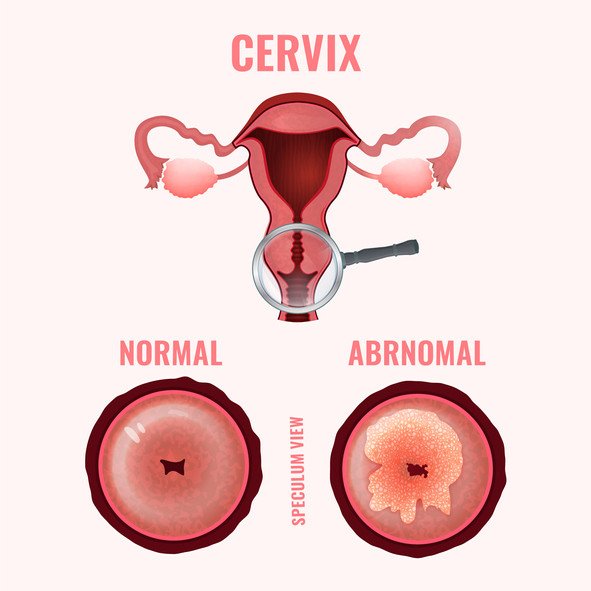Pap Test (Papanicolaou Smear)
Medically reviewed by Drugs.com. Last updated on Nov 27, 2023.
What is a Pap Test (Papanicolaou Smear)?

The Pap test (Papanicolaou smear) is an examination that is used to detect cervical cancer and precancerous conditions of the cervix. If a Pap test detects a precancerous condition (a change on the surface of the cervix that can lead to cancer), your doctor can treat or remove the abnormal tissue to prevent cervical cancer. If a Pap test detects a cervical cancer in its early stages, it may be possible to treat and cure your cancer before it has a chance to spread.
In almost all cases, precancerous changes or cancer on the surface of the cervix are caused by a virus infection called human papilloma virus (HPV). Some types of HPV cause genital warts, and some types of HPV can cause cancer. Most people who are infected with HPV do not have symptoms, but they can spread the virus to others. HPV is spread through sexual contact with an infected person.
Women can be tested for HPV. The doctor uses a cotton swab or small brush to collect cells from the surface of the cervix. The sample is sent to the laboratory to be tested for the presence of HPV DNA.
The HPV DNA test has shown researchers how common this virus really is. Between 20% and 40% of sexually active teenagers test positive for recent HPV exposure, and about 40% of sexually active women between the ages of 20 and 29 have a positive test result. The good news is that most women clear the virus without treatment.
Because the virus is so common, but rarely leads to cancer, the HPV test by itself is not a good screening test for cervical cancer.
The Pap test remains the best way to screen women for cervical cancer. The Pap test is done during a pelvic examination. Cells are gently scraped from the cervix and are sent to a laboratory for evaluation. The Pap test itself takes only a few moments. It is usually part of a complete gynecological examination that may last between 5 and 20 minutes.
What It's Used For
The Pap test is an important screening procedure for cervical cancer. It is used primarily to detect abnormal, precancerous changes that may develop into cervical cancer unless treated. In some cases, the Pap test also will detect cancerous (malignant) cells before cervical cancer becomes visible to the naked eye, and before cancer has spread beyond a localized area.

Women at average risk of cervical cancer should begin regular Pap testing at age 21. Pap smears should be done every three years in women ages 21 to 65. For women ages 30 to 65, another option is screening with both human papilloma virus (HPV) testing and a Pap smear every five years.
More frequent Pap tests may be recommended for women who have a higher risk of cervical cancer because of any of these risk factors:
- A history of sexual intercourse at an early age
- Multiple sex partners
- Smoking
- A history of infection with certain human papilloma viruses
Preparation
If possible, arrange to schedule your Pap test for the middle of your menstrual cycle (around days 15 to 20), and avoid douching for at least three days before your test date. If you are using contraceptive foam or jelly, it is preferable for you to switch to a different form of birth control or abstain from sex for a few days before your Pap test, since some women have mild irritation of the cervix after using a spermicide.
How It's Done
The Pap test is done by your doctor during a gynecological (pelvic) examination. You will probably be asked to remove all your clothing and be given a robe or gown to wear. Usually, an annual gynecological examination involves a breast exam in addition to a pelvic exam. You will also be given a cloth drape to cover your lower torso. Next, you will be asked to lie on your back on the examination table with your legs spread, feet sitting on rests and your knees bent. Your doctor will insert a lubricated instrument called a speculum into your vagina to hold the vaginal walls open for the Pap test.
After looking at your cervix and vagina to check for any visible problems, your doctor will gently scrape the surface of your cervix with a small spatula to collect a sample of cells from the outside of the cervix. Your doctor also will use a small brush to collect cells from the inside of the cervix. These samples will be suspended in liquid, called ThinPrep, and sent to the laboratory where microscope slides will be prepared and examined. Some doctors will prepare the slides immediately in the clinic.
Follow-Up
Once your gynecological exam is finished, you can get dressed and return to your normal daily activities. You may notice a little spotting after the test, so you may choose to use an underwear liner (thin sanitary pad) for a day. After a few days, you should receive a report from your doctor with the Pap test results and recommendations for follow up. You should call your doctor for your Pap test results if you do not receive a report.
Risks
The Pap test is a safe and painless procedure.
When To Call A Professional
Call your doctor if you experience discomfort, bleeding for more than a day, or if you have unusual vaginal discharge after your gynecological exam.
Additional Info
National Cancer Institute (NCI)
https://www.cancer.gov/
Centers for Disease Control and Prevention (CDC)
https://www.cdc.gov/
Image: newannyart/Getty Images
Further information
Always consult your healthcare provider to ensure the information displayed on this page applies to your personal circumstances.
